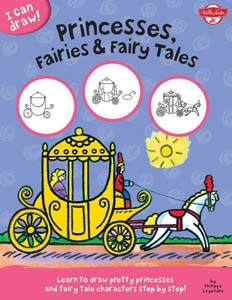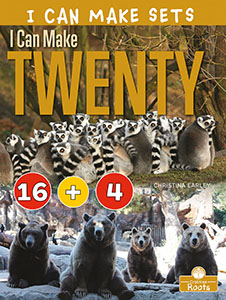Browse Our Books
You can browse our books easily with any of the following filters, hover over the filters or their titles to see their descriptions.
Reading Level
Categories
Or you can use quick search or switch to advanced search for better results...
Search Results (Found 5112 results)

I Can Be a Writer (21st Century Junior Library) 
Writing isn't just for school. In this series by award-winning author Meeg Pincus, young writers can learn what it takes to write like a professional. From scriptwriter to book author, students get a sneak peek at what their future may hold and the skills they can practice today to get them there.

I Can Draw
With these approachable engaging guides, children ages four and older will discover how easy it is to draw a range of favourite subjects.

I Can Make Sets (Crabtree Roots) 
Understanding how to group objects into sets is a key building block in math. Each book in the I Can Make Sets series helps early readers explore different number combinations that make up the number in a set. With engaging, full-page photographs that connect to simple text and relevant sight words, each book builds confidence in reading skills and provides an introduction to this foundational math concept. Every book also includes a page for caregivers and teachers that suggests guiding questio

I Can Play Sports! (Bigfoot Jr.)
The field is set. The whistle is blown. The ball is in play. Game on! Learn about the positions, actions, and scoring it takes to win in I Can Play Sports!

I Can See (Cherry Blossom Press)
The I Can See series explores the familiar sights in a reader's community. The series utilizes a curriculum based text to get children comfortable with reading. Each book uses the Whole Language approach to literacy, a combination of sight words and repetition builds recognition and confidence. Bold, colourful photographs correlate directly to text to help guide readers through the book.

I Can Take Away (Crabtree Roots) 
Learning subtraction is a snap! The I Can Take Away series uses engaging images to help early readers figure out how many objects remain as some are taken away. With full-page photographs that connect to simple text and relevant sight words, each book builds confidence in reading skills and provides an introduction to this foundational math concept. Every book also includes a page for caregivers and teachers that suggests guiding questions to help aid in reading comprehension. Downloadable Teach

I Can't Draw
A child is asked to draw a cat, a sign, and a dinosaur, and more, but the drawings aren't QUITE what his friends and family want. When the child's drawings get him into a bit of trouble, he learns the importance of trying his best.

I Care (Pull Ahead Readers People Smarts-Fiction)
Learn ways to be a good sibling, friend, community member, and more in this fiction series about connecting with others. Each story's carefully levelled text and delightful illustrations support young children learning to read.

I Care (Pull Ahead Readers People Smarts-Nonfiction)
Teach kids ways to care for a friend, a pet, nature, and more in this engaging nonfiction series. Simple text and full-colour photos support young children learning to read.

I Care About 
This bright, illustrated series helps young children take their first steps in exploring their wider world. Each engaging book features exercises to help promote a caring attitude, confidence, and self-esteem, and gives readers a way to discuss their emotions. The illustrations by Michael Buxton are quirky and fun and are designed to inspire a child’s imagination. Free downloadable Teacher’s Guide available.